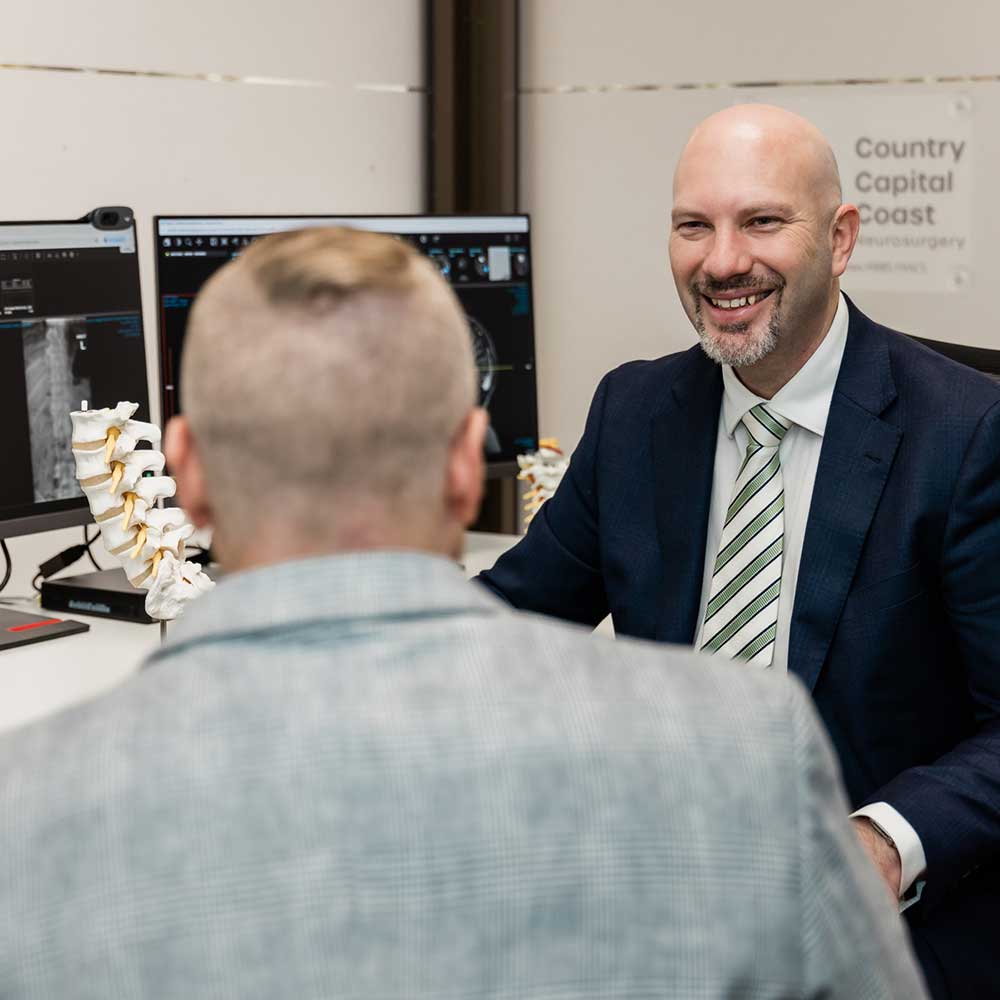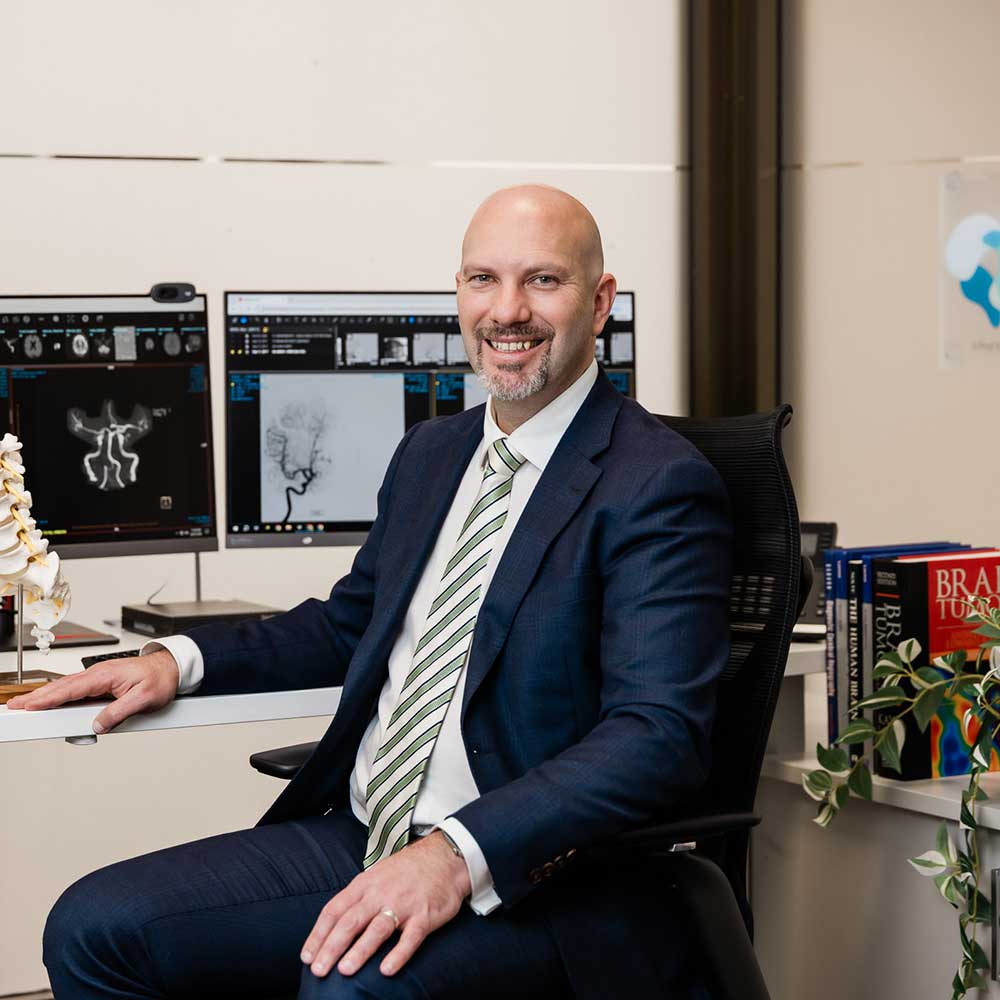Endovascular surgery is a minimally invasive procedure that differs to traditional ‘open’ brain surgery in the following way.
Together, these two approaches provide comprehensive surgical options for managing complex cerebrovascular disorders.
Instead of opening the skull to perform surgery, endovascular neurosurgeons access the brain’s blood vessels through a small puncture in the groin or wrist, navigating catheters and micro-instruments through the vascular system under X-ray guidance.
Endovascular techniques are particularly useful in treating:
Endovascular techniques are particularly valuable in treating brain aneurysms, arteriovenous malformations (AVMs) and dural fistulas. For conditions like aneurysms, endovascular “coiling” has transformed outcomes worldwide, often replacing the need for more invasive open surgery.
Minimally invasive neurosurgery is not suitable for every patient or every condition, but when appropriate, it can make a profound difference to outcomes and recovery. These techniques combine the latest technology with meticulous surgical expertise – offering patients safer, more efficient treatment options.
A/Prof Mews is among a very small number of Australian neurosurgeons dual-trained in both endovascular and open cerebrovascular surgery. This rare expertise allows him to select the safest and most effective approach for each patient, placing him at the forefront of modern neurosurgical practice in Australia.


